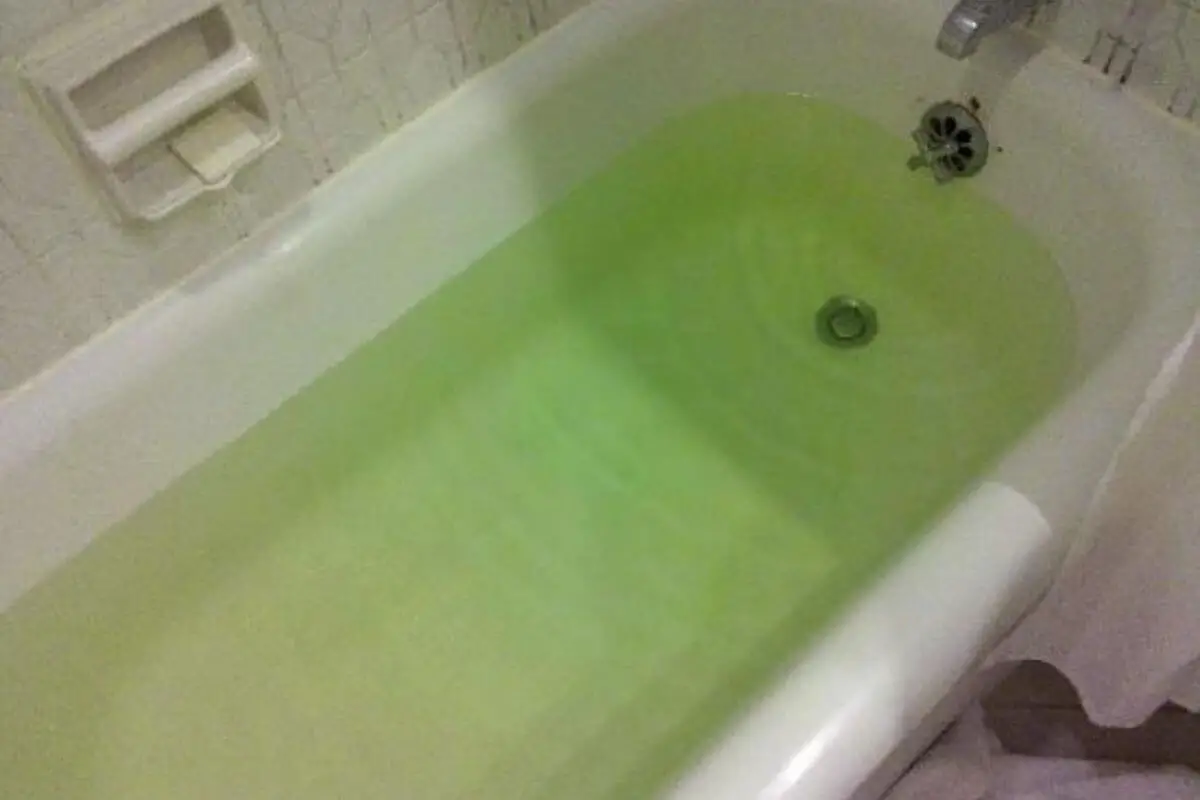Have you ever stepped into your bathtub, turned on the water, and been surprised to find that your bathwater has turned an unusual shade of green? It’s a situation that can be puzzling and even a bit concerning, but there are several reasons why your bathwater might take on a green hue. In this comprehensive guide, we’ll explore the various factors that can lead to green bathwater and provide solutions for addressing the issue.
Common Causes of Green Bathwater
Copper Plumbing:
One of the most common reasons for green bathwater is the presence of copper in your plumbing system. When water flows through copper pipes or fixtures, it can dissolve some of the metal. If the water’s pH is acidic or slightly corrosive, it can cause the copper to leach into the water, giving it a greenish tint.
Algae Growth:
In some cases, green bathwater can be a result of algae growth in the water source. Algae are aquatic plants that can thrive in various water environments. While this is less common in treated municipal water supplies, it can happen in well water or water sources that are not adequately treated.
Reactive Chemicals:
If you use certain chemicals or products in your bath, such as bath salts or bubble bath solutions that contain dyes or pigments, they can react with the water, resulting in a temporary greenish color.
Minerals and Sediments:
High levels of minerals like iron or manganese, as well as sediment and organic matter in the water, can sometimes lead to discoloration. While these are more likely to cause a rusty or brown color, in some cases, they can contribute to greenish tints.
Solutions for Green Bathwater
If you encounter green bathwater, there are several steps you can take to address the issue:
Flush Your Plumbing:
Run the water in your bathtub for a few minutes to flush out any copper particles that may be causing the green tint. This can help if your plumbing system is the source of the problem.
Water Testing:
Consider having your water tested for copper levels and other contaminants. This can help identify the source of the discoloration and determine if any filtration or treatment is needed.
Water Treatment:
If you discover that high copper levels are the cause, you might need to install a water treatment system to remove copper and other impurities from your water.
Check for Algae:
If you suspect algae growth in your water source, contact your local water utility or well water service to discuss potential solutions, such as water treatment or filtration systems.
Review Bath Products:
Check the bath products you use for dyes or pigments that could be contributing to the discoloration. Consider switching to dye-free products if necessary.
Water Filtration:
Installing a water filtration system in your home can help improve water quality and reduce the chances of unusual discoloration.
When to Seek Professional Help
If you are unable to identify the source of the green bathwater or if the issue persists despite taking steps to address it, it’s essential to seek professional assistance. A licensed plumber or water quality specialist can conduct a thorough assessment of your plumbing and water supply to pinpoint the problem and recommend suitable solutions.

In conclusion, green bathwater can be a surprising and disconcerting experience, but it is often caused by factors that can be identified and resolved. By understanding the potential causes and taking appropriate steps to address the issue, you can enjoy a refreshing and worry-free bath without any unexpected color changes in your water. If in doubt, don’t hesitate to consult professionals who can provide expert guidance and solutions.
Preventing and Maintaining Clean Bathwater
In addition to addressing green bathwater when it occurs, there are several steps you can take to prevent it and ensure your bathwater remains clean and clear:
Regular Plumbing Maintenance:
To minimize the risk of copper leaching from your plumbing, consider regular maintenance of your pipes and fixtures. A qualified plumber can inspect and repair any corrosion or wear and tear.
Water Quality Testing:
Regularly test the quality of your water supply. This proactive approach can help you identify issues before they lead to discolored bathwater.
Water Filtration Systems:
Install water filtration or purification systems in your home. These systems can effectively remove impurities and contaminants from your water, including copper and minerals.
Algae Control:
If you rely on well water or suspect algae as a potential cause, consult with professionals who specialize in water treatment to implement solutions for algae control and prevention.
Product Selection:
Be mindful of the bath products you use. Opt for products that are free of dyes and pigments to reduce the likelihood of discoloration. Read product labels and choose options that are known for their purity and quality.
Routine Cleaning:
Clean your bathtub regularly to prevent the accumulation of sediments, minerals, or organic matter that can contribute to water discoloration.
Educate Others:
If you share a household or living space with others, make sure everyone is aware of the importance of water quality and the steps to prevent green bathwater. Encourage responsible use of bath products and plumbing systems.
Professional Guidance:
If you’re unsure about the water quality or the plumbing in your home, seek guidance from professionals who specialize in water treatment and plumbing. They can assess your situation and provide recommendations for long-term solutions.
By being proactive and maintaining good water quality practices, you can reduce the likelihood of green bathwater incidents and enjoy consistently clear and clean bath experiences. Regular inspections, water testing, and proper plumbing maintenance will help ensure that your bathwater remains free of unexpected discoloration and maintains its natural clarity.
Frequently Asked Questions (FAQs) About Green Bathwater
Experiencing green bathwater can be surprising and raise questions about its causes and solutions. Here are some common questions people have about green bathwater:
1. What should I do if I encounter green bathwater?
If you encounter green bathwater, start by running the water for a few minutes to flush out any copper particles that may be causing the discoloration. If the issue persists, consider water testing to determine the source of the problem. In some cases, you may need to install water treatment or filtration systems to address the cause.
2. Is green bathwater safe to use?
Green bathwater is generally safe to use, especially if the discoloration is due to copper plumbing. However, it’s essential to address the underlying issue to prevent any potential health concerns or damage to your plumbing system.
3. Can algae in the water cause green bathwater?
Yes, algae growth in the water source can sometimes lead to green bathwater. This is more common in well water or water sources that are not adequately treated. If you suspect algae as the cause, contact your local water utility or well water service for solutions.
4. Can using specific bath products cause green bathwater?
Yes, certain bath products that contain dyes or pigments can react with the water, resulting in a temporary greenish color. If you suspect bath products as the cause, consider switching to dye-free alternatives.
5. How can I prevent green bathwater?
Preventing green bathwater involves regular plumbing maintenance, water quality testing, water filtration systems, algae control solutions (if applicable), responsible product selection, routine cleaning, and educating household members about water quality practices. These proactive measures can help maintain clean and clear bathwater.
6. What if I’m unable to identify the source of green bathwater or the issue persists?
If you are unable to identify the source of green bathwater or if the problem persists despite taking steps to address it, it’s advisable to seek professional help. A licensed plumber or water quality specialist can conduct a thorough assessment and recommend suitable solutions.
In summary, green bathwater can be addressed by identifying its underlying causes and implementing appropriate solutions. Regular maintenance, water testing, and proactive measures can help prevent unexpected discoloration and ensure consistently clean and clear bathwater. If you have concerns or questions, don’t hesitate to consult professionals who can provide expert guidance and assistance.



